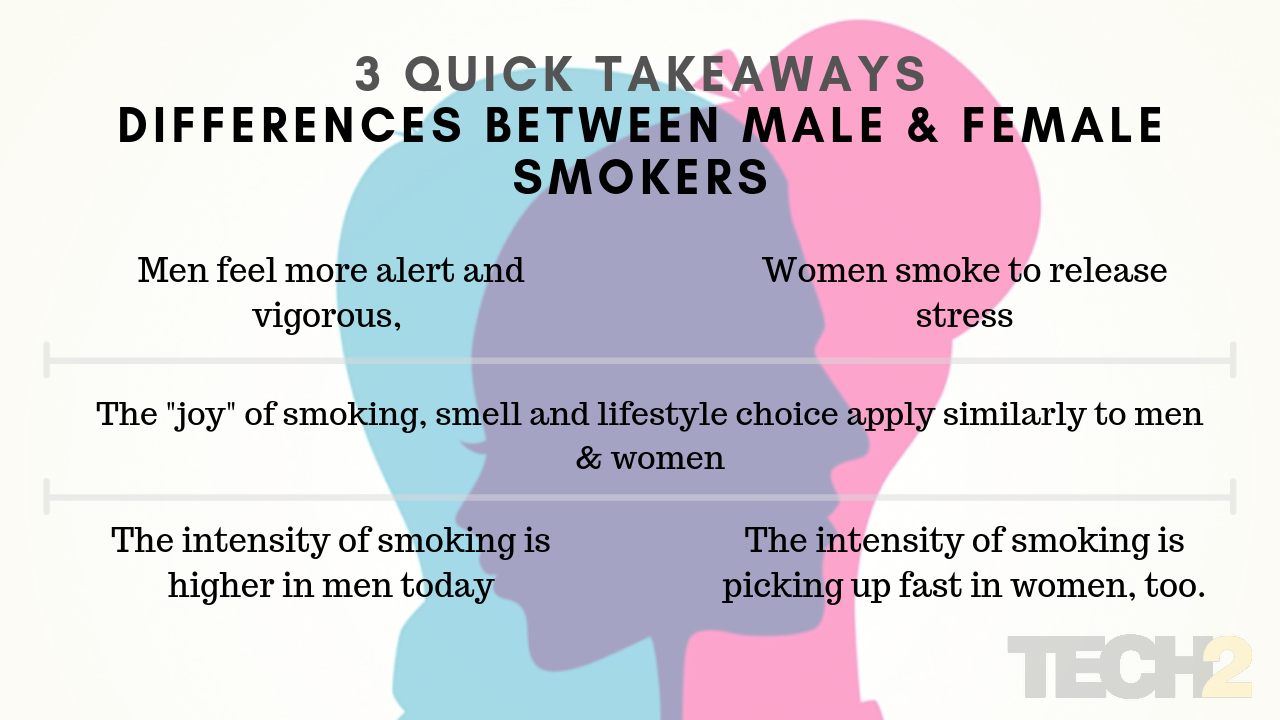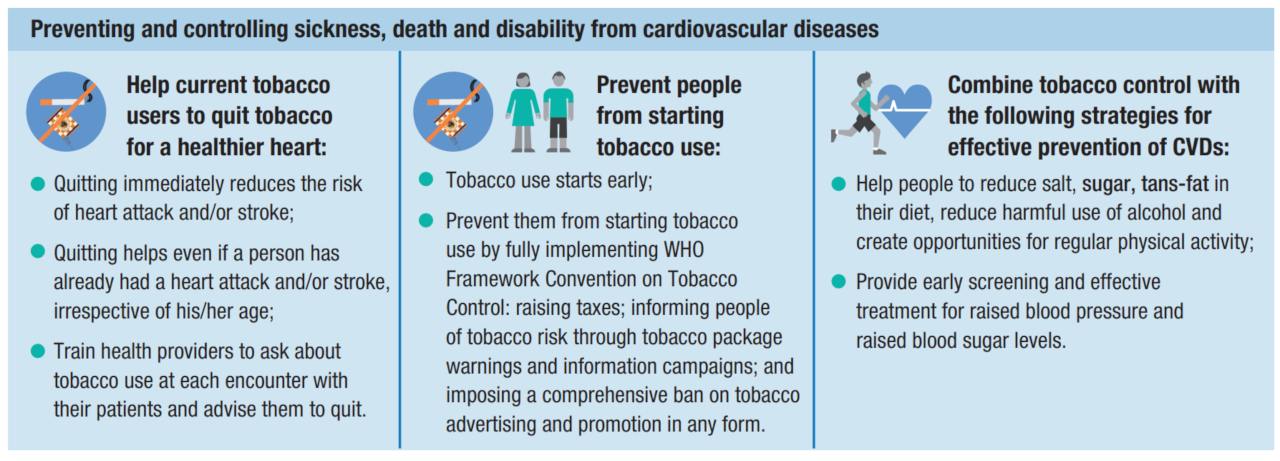WORLD NO-TOBACCO DAY: SMOKING AFFECTS WOMEN AND MEN DIFFERENTLY — HERE'S HOW

Smoking once upon a time used to be considered more of a male pursuit, with much higher numbers of men smoking than women. A few years ago, it was estimated that about 52 percent of men smoked, compared to 34 percent of women. Now, the empirical evidence suggests that the proportion of women smoking is equal if not higher than men. Though the overall percentage of people who smoke has come down, the "gender gap" in smoking has narrowed over time, putting both sexes at more equal risk of the dangers of smoking.
Both sexes have some risks in common
Smoking is perhaps the most dangerous method of using tobacco. Irrespective of gender, it's important to note that inhaled smoke contains nicotine, along with several other dangerous chemicals. Cigarette smoke contains over 4,000 different chemicals including carcinogens — cancer-causing compounds — and other toxins.
Carbon monoxide, for one, is a colorless and odorless gas produced from the partial burning of virtually anything combustible. It accumulates in enclosed spaces (indoors) as a result of smoking tobacco, from poorly-ventilated appliances, and garages. Smokers inhale carbon monoxide to varying degrees where they smoke, and the gas gets pumped into the bloodstream along with other harmful gases. These chemicals create "free radicals" — energetic, reactive chemicals that have the potential to injure every vital tissue, organ, and system in the body without being selective.
Today, roughly 200 million of the world's one billion smokers are women. Like any other business, the tobacco industry too aggressively targets the untapped market — women — to increase its consumer base and replace those who have either quit or lost their lives to the premature illnesses that can result from smoking: cancer, heart attack, stroke, emphysema, COPD to name a few. Approximately 1.5 million women die every year from tobacco use.
Tobacco use harms both genders differently
While many of the dangers of smoking cross gender lines, men and women smokers do face some unique risks. Male smokers may experience a decline in sexual potency and fertility along with a reduction in the sperm count. A recent study released in May 2019 shows that just like women, the biological clock in males is also ticking, and tobacco smoking and consumption is further adding to the problem.
In new smokers, women and men start using tobacco for different reasons. Many more women than men smoke in the false belief that it is a good way to control weight and give your mood a quick lift. Low self-esteem is another psychological driver to the habit in women. In their view, smoking aids in establishing their identity as a confident and independent woman. This makes quitting the habit all-the-more difficult, but certainly not impossible

Female smokers have an increased risk of cardiovascular disease, particularly if they are taking oral contraceptives. They also risk early menopause, cervical cancer and a higher risk of bone fractures.
Over months and years depending on the intensity of smoking, there are many health conditions that it spurs. It damages the innermost lining of the blood vessels in the lungs, thickening them and forcing them into growing narrower than before. This makes smokers more prone to heart attack and stroke than the average. Due to narrower blood vessels, the clot formation may take place.
The incidence of coronary heart disease goes up by 2 to 4 times, stroke by 2 to 4 times, men developing lung cancer by 25 times and the women developing lung cancer by 25.7 times from smoking, according to the Centre for Disease Control in the US.

Some quick numbers and facts on smoking in India. Source: WHO Factsheet 2018
How smoking affects pregnancy
There is a higher incidence of miscarriage, poor growth of the baby in the womb, sudden excessive bleeding leading to loss of pregnancy (abruption) amongst smokers. Among women smokers, the incidence of high blood pressure and diabetes during pregnancy is also very high. If the feotus is exposed to chemicals in cigarette smoke, it can prove life-threatening, potentially ending in birth complications like stillbirths, premature delivery, and extremely low birthweight.
The risk of an ectopic pregnancy, in which the fertilized egg gets implanted outside the womb in the fallopian tubes without transferring to the uterus, is also higher in smokers by up to four times, according to an Edinburgh University study published in the American Journal of Pathology. Apart from the specific case of ectopic pregnancy ruptures causing internal hemorrhaging (bleeding), there is also a general decline in the quality of eggs (ova) by smoking.

It can also result in developmental problems in kids as they grow — foetal stunting, delayed lung development, congenital heart defects, and respiratory problems such as asthma. Centers for Disease Control and Prevention (CDC) warns that smoking during and after pregnancy is a risk factor of Sudden Infant Death Syndrome (SIDS). An analysis by CDC also reveals that prenatal exposure to smoking is associated with disruptive behavioral disorders in children, including Attention Deficit Hyperactivity Disorder (ADHD), Oppositional Defiant Disorder (ODD) and Conduct Disorder (CD).
Controlling tobacco use in India
India is a party to the WHO Framework Convention on Tobacco Control (WHO-FCTC), an international treaty developed in response to the global tobacco epidemic. The framework has provisions to reduce tobacco usage in a number of ways: raising taxes, limiting lobbying by the tobacco industry, implementing addiction- and cessation-programs and raising public awareness about the consequences of smoking. The treaty requires that all parties regularly collect national data on the magnitude, patterns, determinants, and consequences of tobacco use and exposure in their respective countries. India's 2014 report of cessation of smoking doesn't indicate whether the country has implemented any education, communication, training and public awareness programmes targetting any specific section of society, particularly pregnant women.
Gutka
Most of the existing anti-tobacco messaging focuses generically on smoking, but tobacco in India is also consumed in smokeless forms like gutka, or chewing tobacco.
A 2015 study on the use of smokeless tobacco by Indian women between 18–40 years during pregnancy and reproductive years found that once women become daily tobacco users, their tobacco consumption goes up gradually and they continue to use the same amount of tobacco during pregnancy. The study also revealed that women started using tobacco during pregnancy because it was said to counter the weakening of teeth and gums that naturally occurs during pregnancy.
The road ahead
First and foremost, there's needs to be ample support available to both women and men that want to quit. We also need to increase taxes on tobacco products to discourage but not ban their use, and implement interventions specifically to prevent young men and women from developing a tobacco habit. When it comes to raising taxes and prices, we need to target all forms of tobacco currently available in the market, and not cigarettes alone, to prevent users from simply switching to something more convenient.
Since the prevalence of tobacco use amongst women is higher in rural areas, community health workers such as ASHA, and Anganwadi workers in villages need to be trained and armed with the knowledge on the dangers of pregnant women using tobacco.

Tips to help quit smoking. Image: WHO Smoking Factsheet 2018
Always remember: quitting smoking cuts cardiovascular risks, and relatively quickly. Just a year after quitting smoking, the risk of heart attack drops sharply. Within 2 to 5 years from quitting smoking, your risk for stroke reduce to roughly that of a non-smoker's. Third, if you quit smoking, your risks for cancers of the mouth, throat, oesophagus and bladder drop by half in five years. Last but not least, ten years after you quit smoking, your risk for dying from lung cancer drops by half.
Some tips to help you quit smoking
• Identify your smoking triggers and make a conscious effort to avoid them. For instance, if you have a habit of smoking a cigarette post-lunch, replace that habit with something else in your day like going for a walk or having a cup of coffee
• Get rid of all smoking paraphernalia from your home, car and any places you frequent
• Avoid being around smokers
• Do not shy away from taking professional help. Visit a counselor who can guide and support you quit the habit
• Ask your family and friends for assistance
• Read some self-help books on how to quit smoking
Comments
Post a Comment